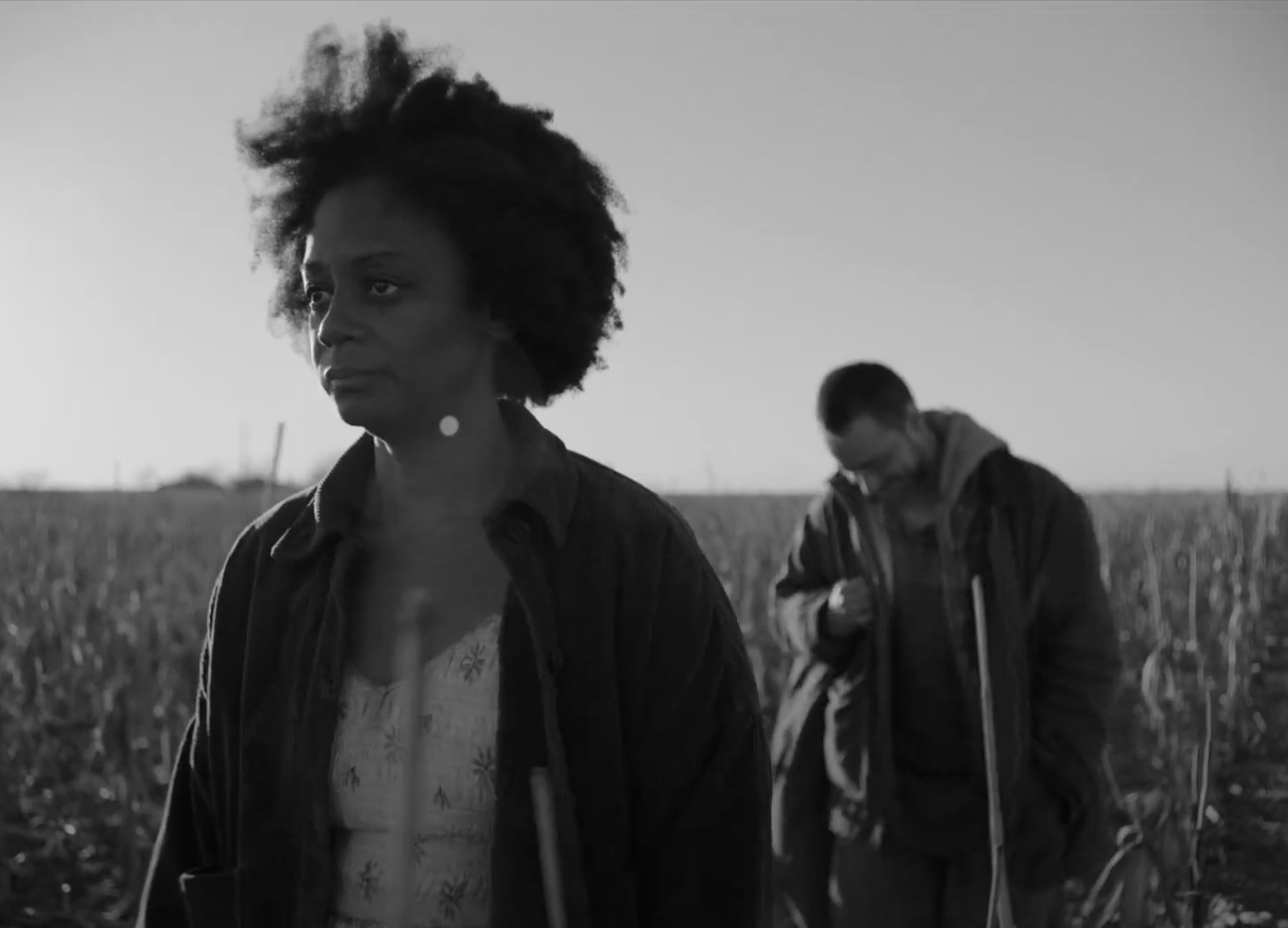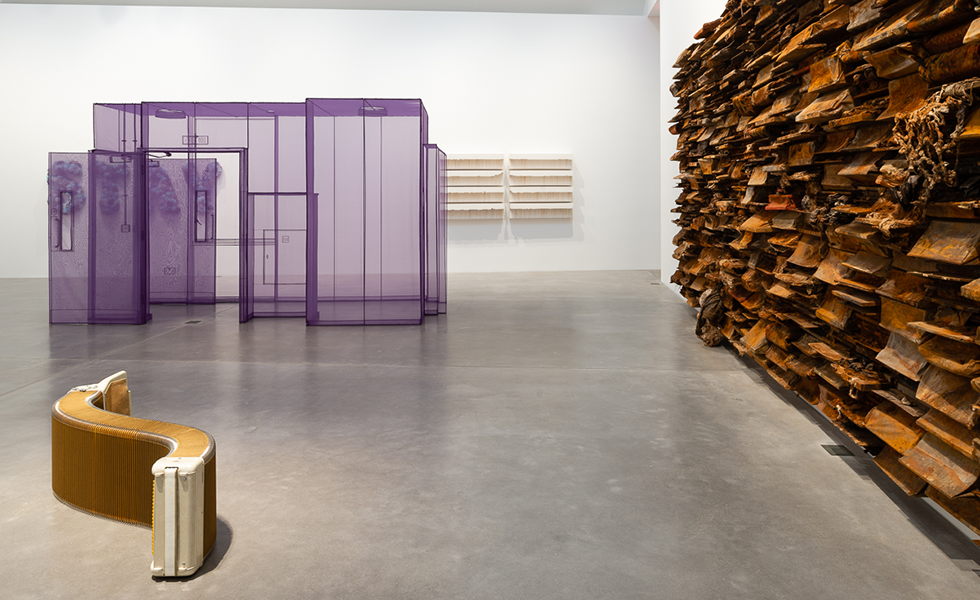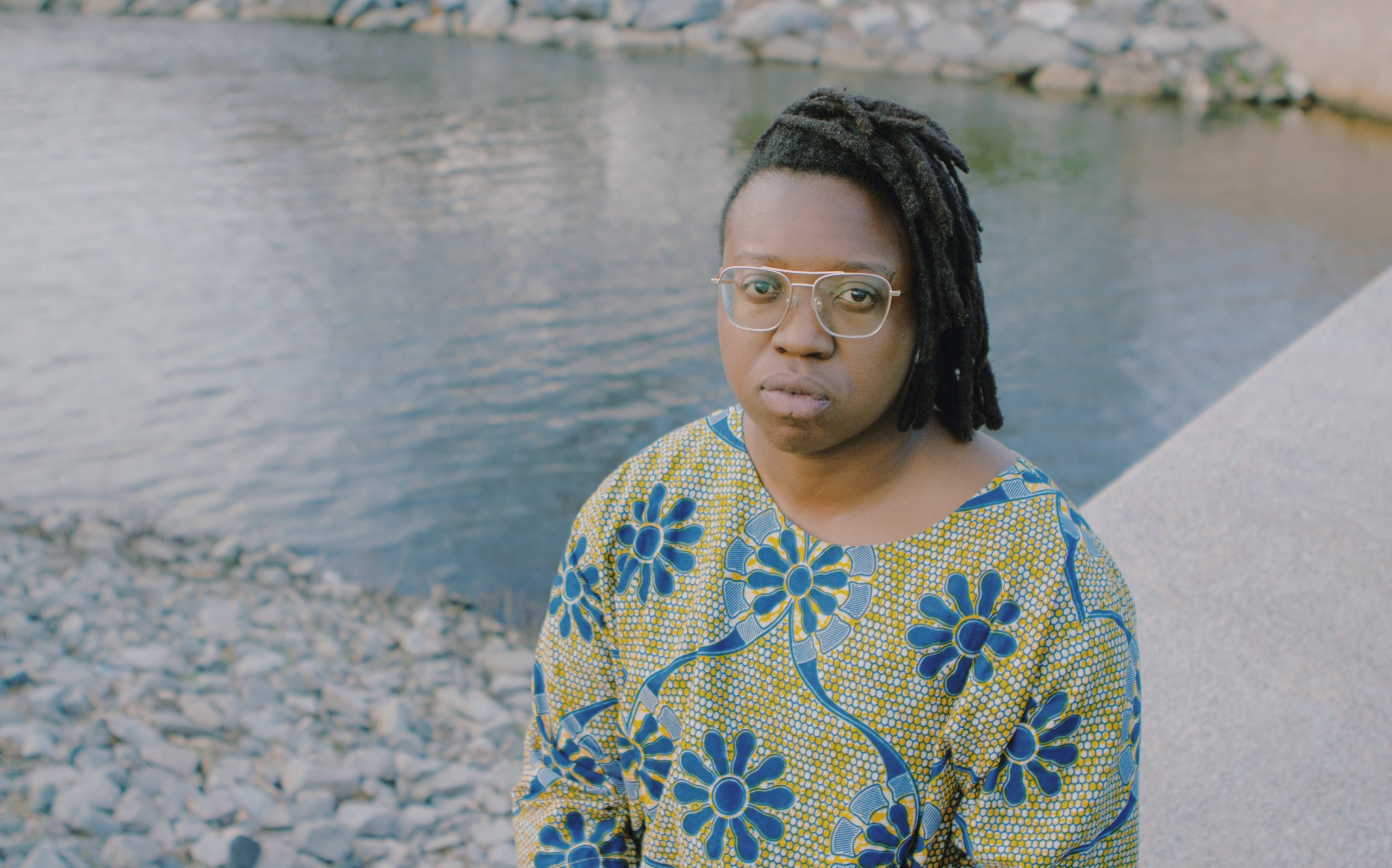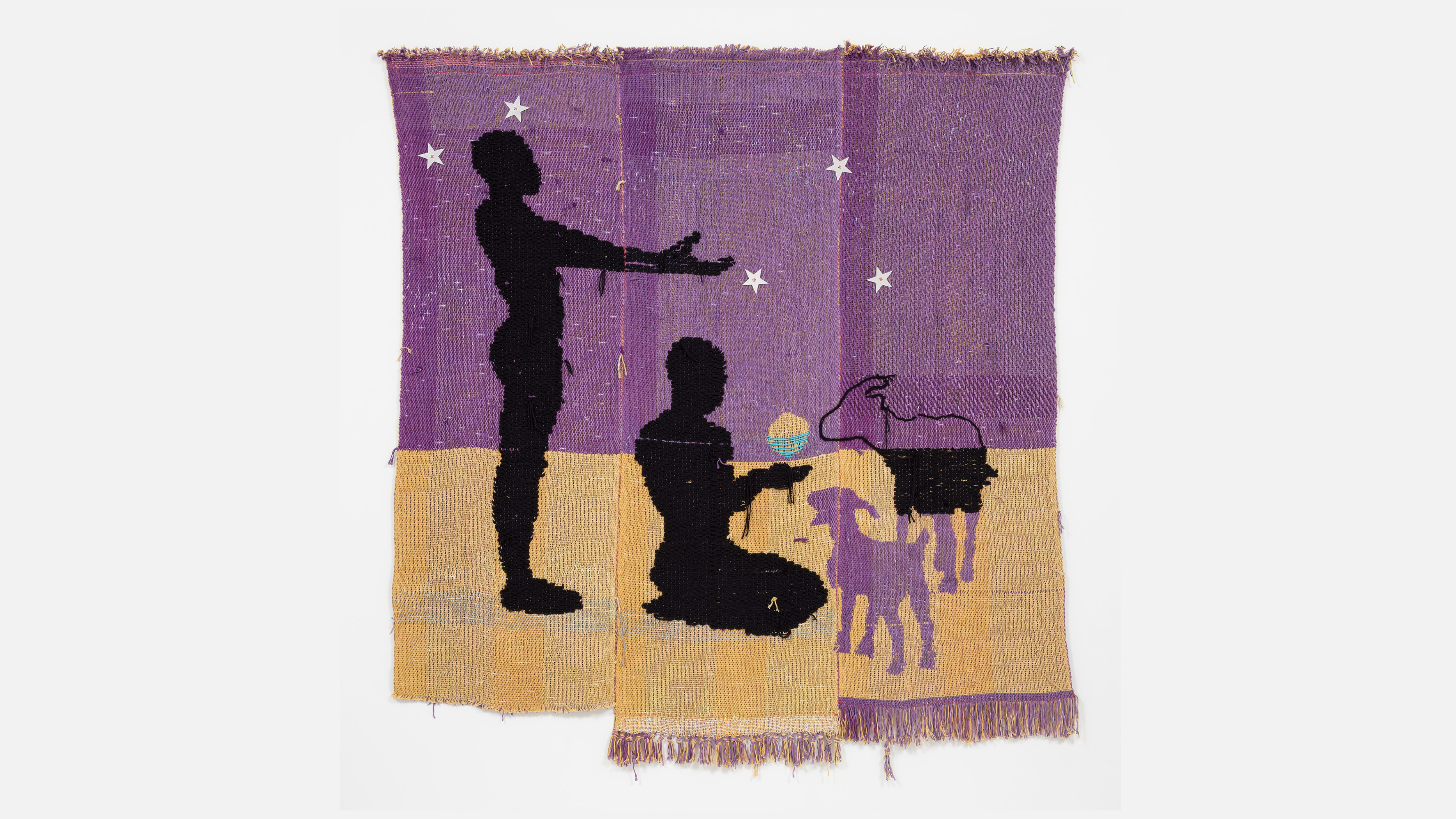
Textile Artist Diedrick Brackens Recasts Symbols of Life and Death in Texas
In his return to Texas, the artist from Mexia uses animals, silhouette, and texture in his latest installation at the Blanton Museum of Art.

A version of this story ran in the March / April 2021 issue.
In Diedrick Brackens’ large-scale weavings, Texas is omnipresent. At times, the state is a place of rest and sanctuary; at others, it is one of dispossession and assault. Vivid scenes of care and absolution take place here, in turn intimate and devastating. Brackens, who was born in Mexia, a town 40 miles east of Waco, is an artist who is deeply concerned with Texas. For better or worse, it’s home.
Drawing on diverse artistic traditions, including West African weaving, European tapestries, and quilting from the American South, Brackens, 32, reimagines Black and queer experience. Using soft, soothing colors, he confronts oppressive forces and histories while decentering them from Black life, instead focusing on moments of affection, communion, and transfiguration. His most recent exhibition runs through May 16 at Austin’s Blanton Museum of Art—a show Brackens, who now lives in Los Angeles, called a “homecoming.” While his compositions are stunning captured in photographs, when viewed in person, the texture and aliveness of the weavings convey a more layered reality. Of the nine pieces in the Blanton show, six evoke peace and tranquility. The medium lends itself to this: Woven textiles conjure a feeling of home. Even on a museum wall, where we can’t touch them, the weavings emanate warmth.
Brackens’ recent work emerged from the rise of the Black Lives Matter movement and the constant, brutalizing representations of Black bodies in mass media. Next to Brackens’ piece “how to return,” an image of a figure reclining in the bath, hangs an explanation of the work: “A lot of the media that I was seeing and consuming were these images of death and violence, and I really wanted to find other ways to articulate these bodies that were about leisure and repose; being relaxed.” In 2017, he created the first three works in the collection, all depicting Black figures in moments of stillness and calm, hugging blankets or resting in solitude.
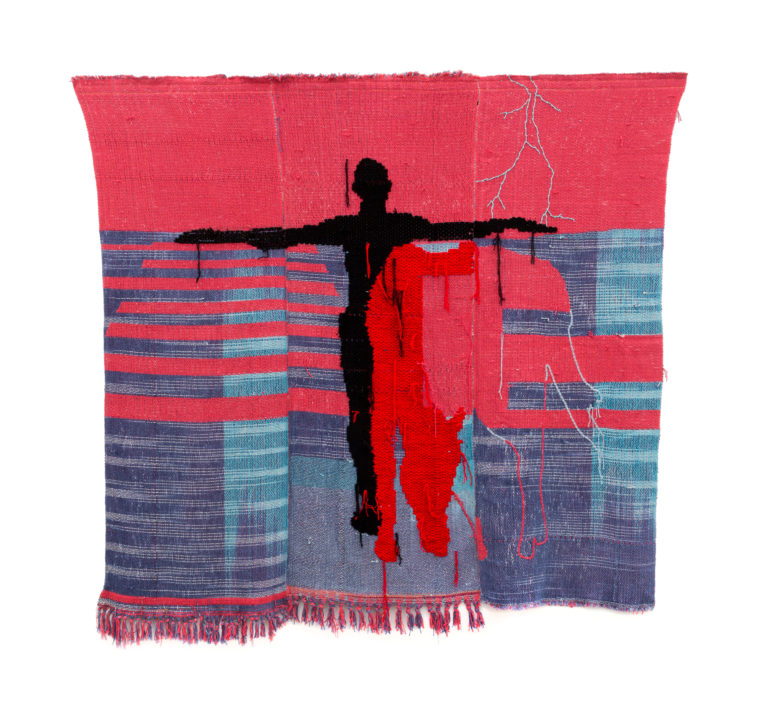
He uses a separate layer of black thread to etch his figures, inspired by the use of silhouette in the work of artists like Kara Walker, Kerry James Marshall, and Aaron Douglas, who all render their figures uniformly pitch-black. Brackens’ choice to involve figurative representations at all is a relatively recent one: “I decided very early in art-making to remove the figure because of the ways it was received in critiques, exhibitions, and reviews,” he told Blanton curator Veronica Roberts in October in Gulf Coast, a literary journal published out of the University of Houston. (Brackens declined an interview request by the Observer.) “I found that a lot of the readings of my work that included Black bodies were lazy, racist, and empty of any critical discussions, and leaned heavily on my biography.” For about eight years, he focused on abstraction instead. It wasn’t until the movie Moonlight was released in 2016, at a time when figuration was also reemerging in conversations in the contemporary art world, that he felt inspired to join the “groundswell of Black voices and images in TV and film” by bringing his figures back to the fore. “I saw Moonlight like six times,” he says. “It cracked me open.”
In the face of tragedy, many of Brackens’ weavings offer beauty and transformation. In “bitter attendance, drown jubilee,” one of the most unforgettable pieces in the show, two figures stand waist-deep in water, catfish swimming between them. Delicate shades of orange and blue color the piece. It was inspired by the 1981 drowning of three Black teenagers in Mexia while in police custody. Lake Mexia was once the site of one of the largest Juneteenth celebrations in the country, with 20,000 people celebrating over a three-day weekend. After the three boys were arrested and put onto a fishing boat without life jackets, in violation of state law, the boat capsized. The police lived and the boys died. “As a child, I grew up hearing about this event from all my family members,” Brackens says. “The loss of Black life, on the anniversary of Black liberation, at the epicenter of its celebration was gut wrenching.” His response was to reimagine the story’s violent ending through art: “To honor the lives lost,” he explains, “the boys are returned to the world transformed as catfish.”
Animals, particularly creatures that are often reviled, are at the heart of several of his works. Catfish are emblematic of the South, but they are also seen as unredeemable creatures, lowly scavengers, and bottom feeders. Brackens’ piece recasts them in a different role, as agents of change and redemption. He also does this with animals thought to have a relationship to the devil, like goats. “I was thinking about these animals as vehicles of self-transformation, as opposed to the way they had been previously maligned,” he says. European tapestries of the Middle Ages exalted unicorns, lions, dragons, and stags; Brackens, meanwhile, exalts the misunderstood animals of Texas.
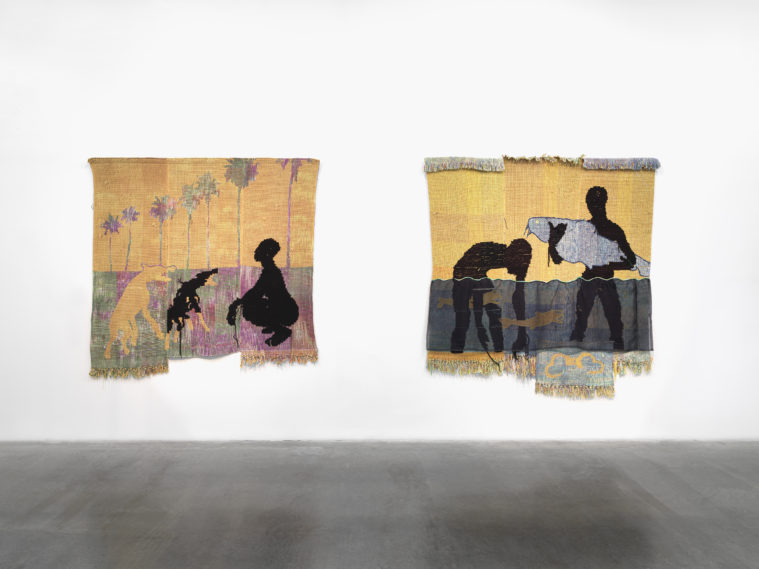
His Blanton exhibition’s title, “darling divined,” is a nod to themes of spirituality and intimacy, calling up ideas of rebirth, new life, and other exchanges of energy. Animals and religious imagery are staples: In one work, “opening tombs beneath the heart,” a pig walks along the floor of a church. Above, it appears that one male figure is blessing another; the two men are in an intimate scene, hand touching lips. In another, “demigod,” a Christlike figure stands with his arms out like a cross. A deep red horse grazes in front of him, its shape only partially filled in—like all animals in the show, left with negative space for unknown magic and transformation.
This lyrical, allegorical approach to folklore, history, and myth structures Brackens’ work. Everything might become something else. He has the skill of a poet, mining symbols of life and death in Texas for new meaning. The material, too, is telling. He uses cotton yarn, which he dyes himself—partly because it’s inexpensive and practical, but also because of its significance in Texas history. His own grandmother picked it. “I think often about the unknowable terrors and violence endured, all back-dropped by King Cotton,” he says. “And I know it is my life’s work to try and make something beautiful out of this material. I hope it is some small healing tribute to my ancestors when I choose to sit at my loom and weave my stories.”

